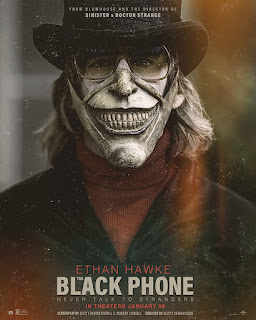Short Film Research: Checkpoint/Thriller
Regarding the camera angles, movements and shots, this short film has plenty of them. For instance, it includes a three-shot, showing the family members in the car, to make the audience familiar with them and somewhat get attached. Moreover, it also contains a wide shot, showing the family’s environment to show the audience where it takes place, and to enhance the fact that there is no one else besides them and the officers. Additionally, the tracking shot of the dad getting into the car is being used to highlight his emotions. Finally, it includes a low angle of the officer that makes him seem superior and overpowering.
When it comes to sound, this short film uses dialogue, to build a conflict between the family and the officers, which helps reach the climax. Another type of sound is incidental, which strongly enhances suspense and drama to make the audience feel on the edge of their seats. Additionally, the ambient sounds present play a huge role when it comes to the fighting scenes, by providing grunts, thuds, and more.
The Mise-en-Scene of this short film has been well thought of. Starting with costume, the family wears casual clothes whereas the officers wear their specific apparel which makes them earn respect and power. Concerning the lighting, this short film has cold tones which makes it a bit uncomfortable and unsettling, which truly reflects the theme of the short film. The soldiers acted arrogant and dangerous, doing most of the work with their facial expressions. However, the family members act scared, defensive but calm, and guilty near the end. About the makeup, it is very minimal, and it is used by the end when it is used to make a fake wound with fake blood. Some props that are present are guns, phone, car keys etc. Finally, the setting shows a rural environment, in the middle of nature, as if they’re lost to show that they are alone and that no one can help them out.
Some of the most relevant editing techniques that appeared in the short film are for Islande shot-reverse shot, which helped demonstrate the conversation the dad had with the officer that was annoying him, which made it very tense. Another one is action match: for instance, one shot would show the face of the officer and then show his entire appearance in the next one. This helps visualize what the situation in the clip would look like from another perspective. Finally, another one that occurs very often is jump cut. For example, it would show the dad’s face in one shot, followed by another one showing him with the riffle in his hands, right in front of the officer.
Some examples of thriller films are Sightless by Cooper Karl, the Black Phone by Scott Derrickson, and Boiling Point by Philip Barantini.
Some elements of thriller that I like are mostly the editing techniques: whether it may be jump cuts, shot-reverse shot, or cutaway, they all provide the thrill an audience is looking for. Moreover, I find thriller stories more entertaining and jaw dropping due to the intense climaxes and plot twists.
Some elements of thriller that do not appeal to me are mostly some of the needed props such as weapons, as well as gore makeup, to create fake wounds. Another aspect is the acting. In thriller, acting might be a challenge as it requires a lot of acting skills to convey the multitude of emotions that typically appear in this genre, as well as fighting, which is not for everyone.




Comments
Post a Comment